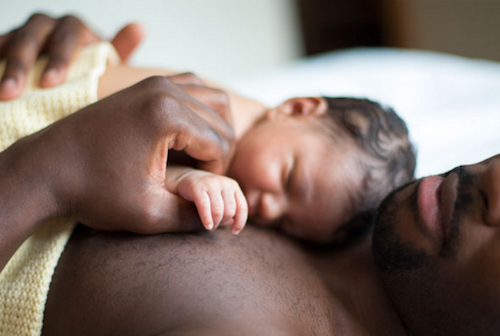|

CLICK ON weeks 0 - 40 and follow along every 2 weeks of fetal development
|
||||||||||||||||||||||||||||
|
Developmental Biology - Infant Skin-on-Skin Contact Parental Touch Reduces Pain Perception in Babies Brains of babies that remained in a cot or incubator also reacted less strongly to heel lance pain than fully clothed babies held by their own parents. But, researchers think this may be the result of less disruption to these babies before their procedure. Or, may be the result of sensitive, individualized care each baby received from staff. Infant behaviour was not significantly different between each group, although the skin-to-skin group did exhibit slightly reduced responses in terms of facial expression and heart rate. Other studies have found skin-to-skin contact with a parent does affect baby behaviour and may reduce how strongly a baby reacts to pain, but those studies did not investigate brain response using EEG. In the current study, babies' brain responses were not only dampened in the skin-to-skin group, but also followed a different neural pathway. "Newborn babies' brains have a high degree of plasticity, particularly those born preterm, and their development is highly dependent on interactions with their parents. Our findings may lend new insights into how babies learn to process threats, as they are particularly sensitive to maternal cues." Abstract Background Neonates display strong behavioural, physiological and cortical responses to tissue-damaging procedures. Parental contact can successfully regulate general behavioural and physiological reactivity of the infant, but it is not known whether it can influence noxious-related activity in the brain. Brain activity is highly dependent upon maternal presence in animal models, and therefore this could be an important contextual factor in human infant pain-related brain activity. Methods Global topographic analysis was used to identify the presence and inter-group differences in noxious-related activity in three separate parental contexts. EEG was recorded during a clinically required heel lance in three age and sex-matched groups of neonates (a) while held by a parent in skin-to-skin (n = 9), (b) while held by a parent with clothing (n = 9) or (c) not held at all, but in individualized care (n = 9). Results The lance elicited a sequence of 4–5 event-related potentials (ERPs), including the noxious ERP (nERP), which was smallest for infants held skin-to-skin and largest for infants held with clothing (p=0.016). The nERP was then followed by additional and divergent long-latency ERPs (> 750 ms post-lance), not previously described, in each of the groups, suggesting the engagement of different higher level cortical processes depending on parental contact. Conclusions These results show the importance of considering contextual factors in determining infant brain activity and reveal the powerful influence of parental contact upon noxious-related activity across the developing human brain. Significance This observational study found that the way in which the neonatal brain processes a noxious stimulus is altered by the type of contact the infant has with their mother. Specifically, being held in skin-to-skin reduces the magnitude of noxious-related cortical activity. This work has also shown that different neural mechanisms are engaged depending on the mother/infant context, suggesting maternal contact can change how a baby's brain processes a noxious stimulus. Authors Laura Jones, Maria Pureza Laudiano-Dray, Kimberley Whitehead, Judith Meek, Maria Fitzgerald, Lorenzo Fabrizi and Rebecca Pillai Riddell. AcknowledgementsScience This work was funded by the Medical Research Council UK (MR/M006468/1, MR/L019248/1, and MR/S003207/1) and an International Association for the Study of Pain Collaborative Research Grant. The authors have no conflict of interest to declare. Return to top of page. | Sep 30 2020 Fetal Timeline Maternal Timeline News  Various studies have found skin-to-skin contact with a parent has a positive affect on infant behaviour. The current study verified results using infant brain EEG testing. CREDIT Public Domain.
| ||||||||||||||||||||||||||||

